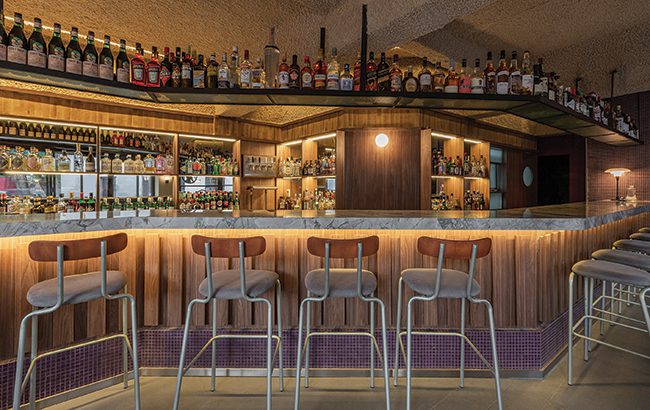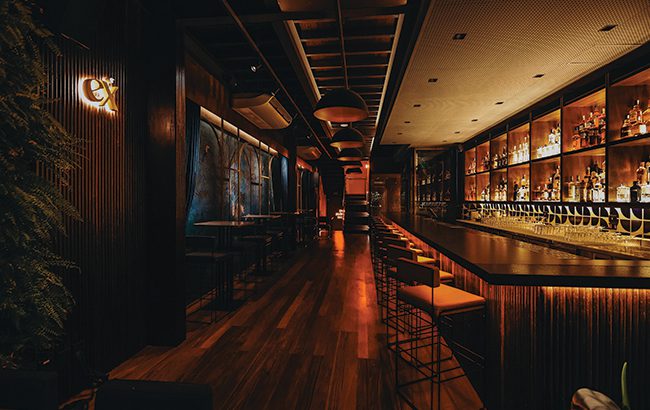Global Bar Report 2024: South America
Local ingredients are coming to the fore in South America, as bartenders take indigenous creations to the next level.

Not without its challenges, South America’s bar scene is finding strength in adversity, and taking inspiration from local flavours, creating some exceptional drinking experiences in the process.
Like many other regions around the world, times are tough economically, putting pressure on bar operators. “Argentina is at a tricky point in time,” says Ludovico De Biaggi, bar manager of Buenos Aires bar Oh No! Lulu. “We are going through a recession, so cocktail consumption is at an all-time low. People aren’t going out as much as they used to, and, in general, cocktails are expensive.”
The situation is much the same elsewhere in the region, confirms IWSR research director Jose Luis Hermoso. “In several markets in Latin/South America, the on-trade has been impacted by the economic downturn with consumers going out less.”
In Brazil, for example, 55% of drinkers say they’re going out less, with a strong preference for at-home consumption, according to IWSR Bevtrac consumer data from the first half of 2024.
“Prices are highly unstable, and certain technologies or machinery don’t arrive easily due to obstacles or issues with imports,” says Florencia Blanco, head bartender of Boticario in Buenos Aires. But she sees a positive side too. “It’s how we creatively overcome limitations to develop innovative proposals.”
Also in Argentina’s capital, Tres Monos co-founder Charly Aguinsky is looking on the bright side too, while acknowledging the impact of the financial crisis. “We are used to ups and downs, and this brings opportunities. For example, we partnered with small distilleries to have our own gin and whisky, which perhaps in a different country or context would have been more difficult.”
In Colombia, at El Barón in Cartagena, general manager Juan David Díaz describes a greater connection between bars and their communities, through the use of local ingredients, buying direct from farmers, and a focus on sustainability. “This not only makes locals more willing to support these establishments, but it also helps make cocktails more profitable,” he says.
Franco Cabello, CEO and founder of Poise, the digital agency for The Green Room, formerly Nkiru Bar, in Santiago, says: “There is a growing interest in signature cocktails, and the appreciation of local ingredients, which has led to remarkable creativity in bars. In Chile, there is a boom in concept bars, where not only the quality of the cocktail is sought, but also a special atmosphere that transports customers. Hidden spaces, themed decorations and the use of storytelling have become key to standing out in an increasingly competitive market.”
Meanwhile, Díaz is noticing “a return to basics, with a focus on minimalism, low-ABV, and zero-proof cocktails”, as well as “significant investment in technology and equipment, with many new bar openings embracing these advancements”.
There’s also greater recognition of an attribute characteristic of South America on the whole, according to Veronica Di Pietrantonio, brand manager for Latin American-inspired cocktail bar Viajante87 in London. “People are understanding how amazing the hospitality of the people in the region is.”
Di Pietrantonio is also seeing more bars take a farm-to-table approach, highlighting Cartagena’s Alquímico and São Paulo’s SubAstor as pioneers in this. “More people are working directly with local farms and producers, not just to buy ingredients, but to collaborate with them and bring people to see what they do.”
Talk about terroir
De Biaggi says: “Argentine bartenders used to look too much to the US and to ‘el otro lado del charco’ – the other side of the pond, Europe – for inspiration, but now we have taken techniques like sous vide infusions or redistillation and applied it to our own ingredient making.
“Our cocktails talk about terroir and the amazing local herbs and spices we have in our beautiful country.”
He sees this further afield too, singling out Lady Bee in Lima for taking “local Peruvian ingredients to another level”.
Aguinsky is also seeing this in the region. “There is a trend to look into what each country has to offer, and develop a proposal based on highlighting those native products and producers. There’s value in the background, flavours and processes, and not necessarily in the base spirit. The trend is expanding in South America, and is one of the main reasons why our countries are creating an impact worldwide.”
Bars to watch in 2025
Baker’s Bar, Montevideo, Uruguay

Fun and laid back, Montevideo’s Baker’s Bar is nevertheless dedicated to quality food and drink – to the extent that it’s named in tribute to 20th-century cocktail writer Charles H. Baker Jr, author of The South American Gentleman’s Companion (1951), among other books. The bar offers elegant takes on classics, alongside a selection of tapas, including empanadas and croquetas, and there’s ample space outside to enjoy it all. In the words of Ludovico De Biaggi (from Oh No! Lulu, Buenos Aires), it’s a “fun bar with high energy and good cocktails”.
Exímia, São Paulo, Brazil

Celebrated Brazilian bartender Márcio Silva recently opened this two-storey tribute to Brazil’s history and culture, not to mention its wealth of ingredients and flavours, in partnership with chef Manu Buffara and the Fullen brothers, Nic and Gabriel, of Locale Group. Taking cues from the country’s diversity, Silva makes extensive use of local produce to create inventive cocktails, such as the Ameríndio, combining rum with Brazilian masala, Bourbon, pau-brasil, amburana, lime, and ginger. These drinks serve as inspiration for Buffara’s dishes, and the music has a Brazilian flair to it too, with DJs performing upstairs on weekends.
The Green Room, Santiago, Chile

Formerly known as Nkiru Bar, this Santiago venue takes cues from the bars of Madrid to create an approachable-yet-sophisticated experience – all with a serious commitment to zero waste. Newly christened as The Green Room, the bar retains all of the sustainable sensibilities of Nkiru, but with a new concept that places a focus on gastronomy too. Cocktails tend towards contemporary takes on classics, such as a crystal-clear Negroni Bianco or spicy Paloma with chipotle. The tapas menu, meanwhile, from chef Sergio Barroso, aims to bring together Spanish tradition and modernity.
Related news
Petition aims to save 9,000 British on-trade venues
